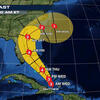
Hurricanes are one of nature’s most powerful storms. They produce strong winds, storm surge flooding, and heavy rainfall that can lead to inland flooding, tornadoes, and rip currents. The National Oceanic and Atmospheric Administration (NOAA) provides essential educational material about hurricanes, including what causes hurricanes, how hurricane’s are formed, how they are named and hurricane safety. NOAA also provides lessons and activities.
How Do Hurricanes Form?
Hurricanes are very large and intense storms. But where do these giant storms come from? In this video, NOAA SciJink explores the science of hurricanes. NOAA SciJinks, created by the National Oceanic and Atmospheric Administration, provides a library of videos, activities, and articles about weather and Earth science!
Hurricanes at Home
In this webinar from the National Oceanic and Atmospheric Administration’s (NOAA) National Hurricane Center, Hurricane Specialists Robbie Berg, Andy Latto, John Cangialosi, and Dan Brown from the National Hurricane Center; Warning Coordination Meteorologist Nelson Vaz from the National Weather Service New York/Upton; Meteorologist-in-Charge Jeff Orrock from the National Weather Service Wakefield, Virginia; and Flight Director Jack Parrish from the NOAA Aircraft Operations Center share important information about hurricanes in the Mid-Atlantic Region. The Mid-Atlantic Region includes, New York, New Jersey, Pennsylvania, Delaware, Maryland, Washington, D.C. and Virginia. Visit here for an overview of the National Hurricane Center.
The National Hurricane Center Explains the “Cone of Uncertainty”

National Hurricane Center (NHC) Hurricane Specialists John Cangialosi and Robbie Berg explain how the cone of uncertainty is created, what its limitations are, and what it can be used for. The cone of uncertainy contains the probable path of a storm’s center, but does not show the size of the storm. Hazardous conditions can occur outside of the cone.
Storm Surge Can Be Deadly — 10 Tips to Be Ready

Storm surge is often the greatest threat to life and property from a hurricane. It poses a significant threat for drowning. A mere six inches of fast-moving flood water can knock over an adult. It takes only two feet of rushing water to carry away most vehicles — including pickups and SUVs. Storm surge can cause water levels to rise quickly and flood large areas —sometimes in just minutes, and you could be left with no time to take action if you haven’t already evacuated as instructed. The National Hurricane Center provides important tips on preparing for storm surge.

